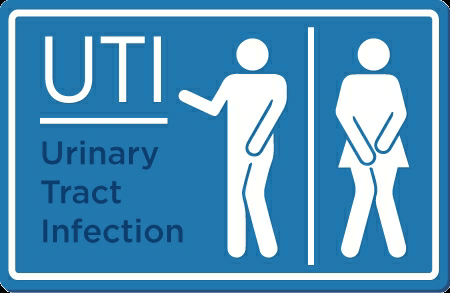Urinary Tract Infection And Its Prevention!
A urinary tract infection (uti) is an infection in any part of your urinary system — your kidneys, ureters, bladder and urethra. Most infections involve the lower urinary tract — the bladder and the urethra.
Women are at greater risk of developing a uti than are men. Infection limited to your bladder can be painful and annoying. However, serious consequences can occur if a uti spreads to your kidneys.
Doctors typically treat urinary tract infections with antibiotics. But you can take steps to reduce your chances of getting a uti in the first place.
Symptoms -
Urinary tract infections don't always cause signs and symptoms, but when they do they may include:
- A strong, persistent urge to urinate
- A burning sensation when urinating
- Passing frequent, small amounts of urine
- Urine that appears cloudy
- Urine that appears red, bright pink or cola-colored — a sign of blood in the urine
- Strong-smelling urine
- Pelvic pain, in women — especially in the center of the pelvis and around the area of the pubic bone
Risk factors -
Urinary tract infections are common in women, and many women experience more than one infection during their lifetimes. Risk factors specific to women for utis include:
- Female anatomy - A woman has a shorter urethra than a man does, which shortens the distance that bacteria must travel to reach the bladder.
- Sexual activity - Sexually active women tend to have more utis than do women who aren't sexually active. Having a new sexual partner also increases your risk.
- Certain types of birth control - Women who use diaphragms for birth control may be at higher risk, as well as women who use spermicidal agents.
- Menopause - After menopause, a decline in circulating estrogen causes changes in the urinary tract that make you more vulnerable to infection.
Other risk factors for utis include:
- Urinary tract abnormalities - Babies born with urinary tract abnormalities that don't allow urine to leave the body normally or cause urine to back up in the urethra have an increased risk of utis.
- Blockages in the urinary tract - Kidney stones or an enlarged prostate can trap urine in the bladder and increase the risk of utis.
- A suppressed immune system - Diabetes and other diseases that impair the immune system — the body's defense against germs — can increase the risk of utis.
- Catheter use - People who can't urinate on their own and use a tube (catheter) to urinate have an increased risk of utis. This may include people who are hospitalized, people with neurological problems that make it difficult to control their ability to urinate and people who are paralyzed.
- A recent urinary procedure - Urinary surgery or an exam of your urinary tract that involves medical instruments can both increase your risk of developing a urinary tract infection.
Prevention -
You can take these steps to reduce your risk of urinary tract infections:
- Drink plenty of liquids, especially water. Drinking water helps dilute your urine and ensures that you'll urinate more frequently — allowing bacteria to be flushed from your urinary tract before an infection can begin.
- Drink cranberry juice. Although studies are not conclusive that cranberry juice prevents utis, it is likely not harmful.
- Wipe from front to back. Doing so after urinating and after a bowel movement helps prevent bacteria in the anal region from spreading to the vagina and urethra.
- Empty your bladder soon after intercourse. Also, drink a full glass of water to help flush bacteria.
- Avoid potentially irritating feminine products. Using deodorant sprays or other feminine products, such as douches and powders, in the genital area can irritate the urethra.
- Change your birth control method. Diaphragms, or unlubricated or spermicide-treated condoms, can all contribute to bacterial growth.



+1.svg)
